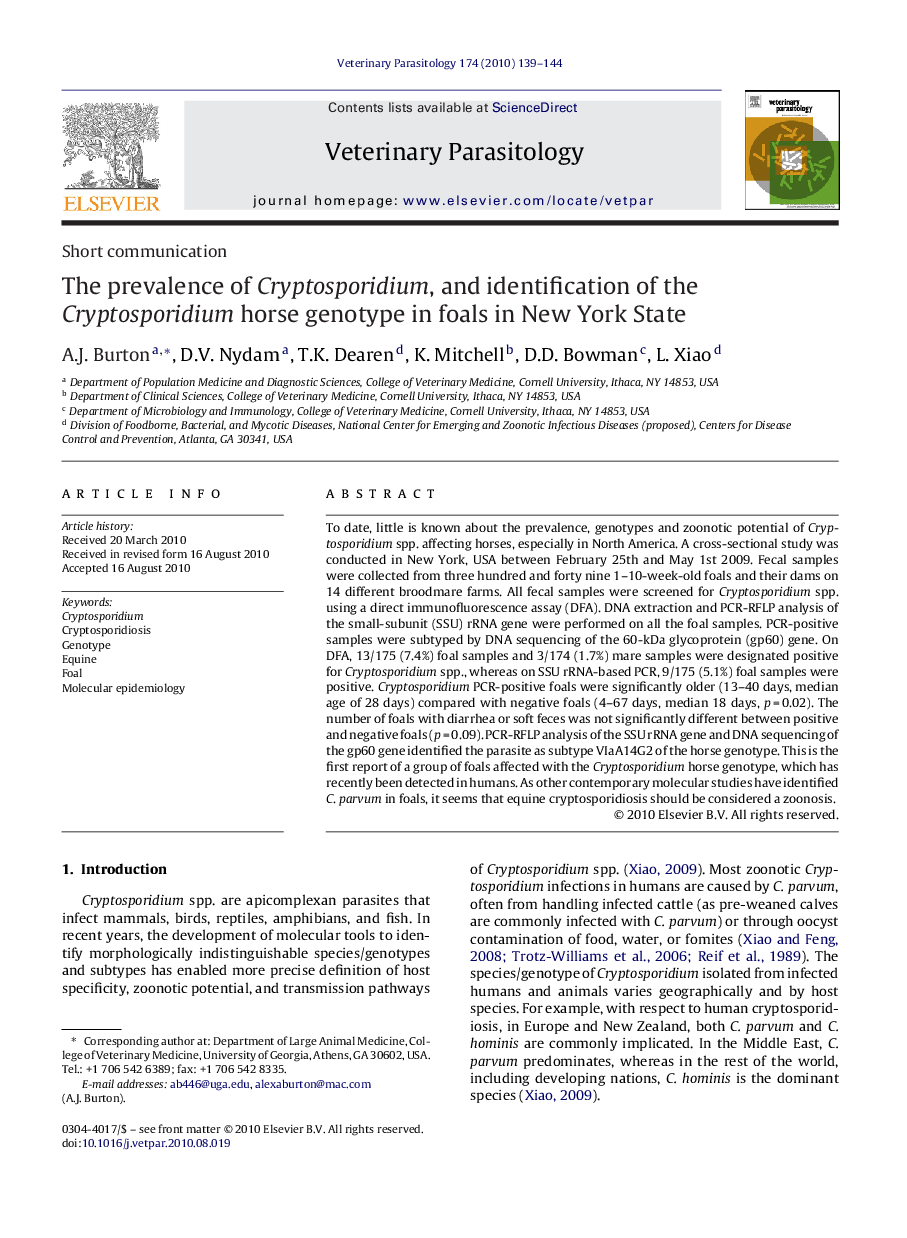| کد مقاله | کد نشریه | سال انتشار | مقاله انگلیسی | نسخه تمام متن |
|---|---|---|---|---|
| 2470519 | 1555733 | 2010 | 6 صفحه PDF | دانلود رایگان |

To date, little is known about the prevalence, genotypes and zoonotic potential of Cryptosporidium spp. affecting horses, especially in North America. A cross-sectional study was conducted in New York, USA between February 25th and May 1st 2009. Fecal samples were collected from three hundred and forty nine 1–10-week-old foals and their dams on 14 different broodmare farms. All fecal samples were screened for Cryptosporidium spp. using a direct immunofluorescence assay (DFA). DNA extraction and PCR-RFLP analysis of the small-subunit (SSU) rRNA gene were performed on all the foal samples. PCR-positive samples were subtyped by DNA sequencing of the 60-kDa glycoprotein (gp60) gene. On DFA, 13/175 (7.4%) foal samples and 3/174 (1.7%) mare samples were designated positive for Cryptosporidium spp., whereas on SSU rRNA-based PCR, 9/175 (5.1%) foal samples were positive. Cryptosporidium PCR-positive foals were significantly older (13–40 days, median age of 28 days) compared with negative foals (4–67 days, median 18 days, p = 0.02). The number of foals with diarrhea or soft feces was not significantly different between positive and negative foals (p = 0.09). PCR-RFLP analysis of the SSU rRNA gene and DNA sequencing of the gp60 gene identified the parasite as subtype VIaA14G2 of the horse genotype. This is the first report of a group of foals affected with the Cryptosporidium horse genotype, which has recently been detected in humans. As other contemporary molecular studies have identified C. parvum in foals, it seems that equine cryptosporidiosis should be considered a zoonosis.
Journal: Veterinary Parasitology - Volume 174, Issues 1–2, 24 November 2010, Pages 139–144